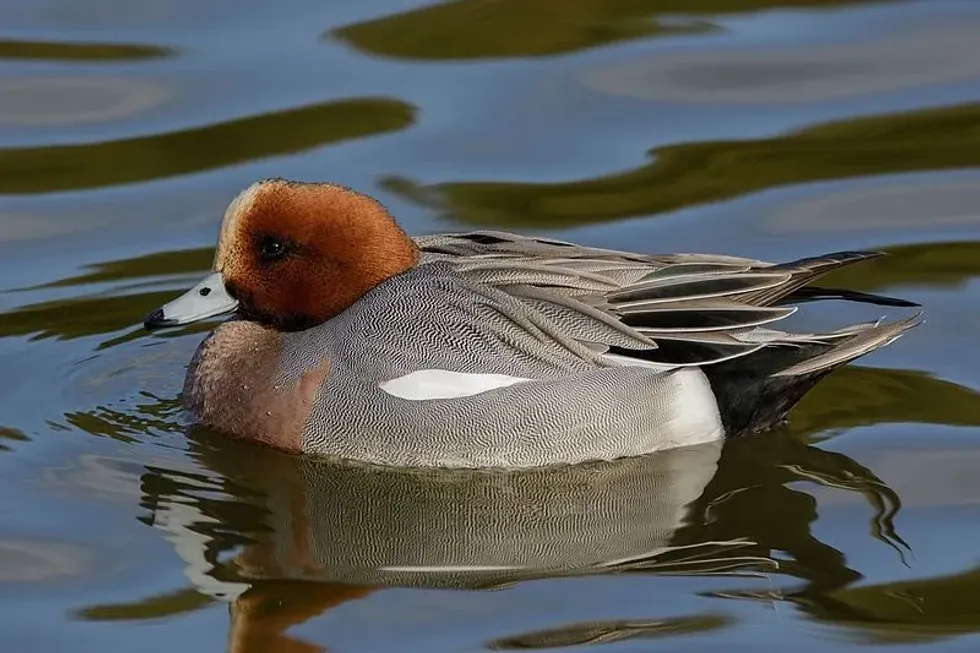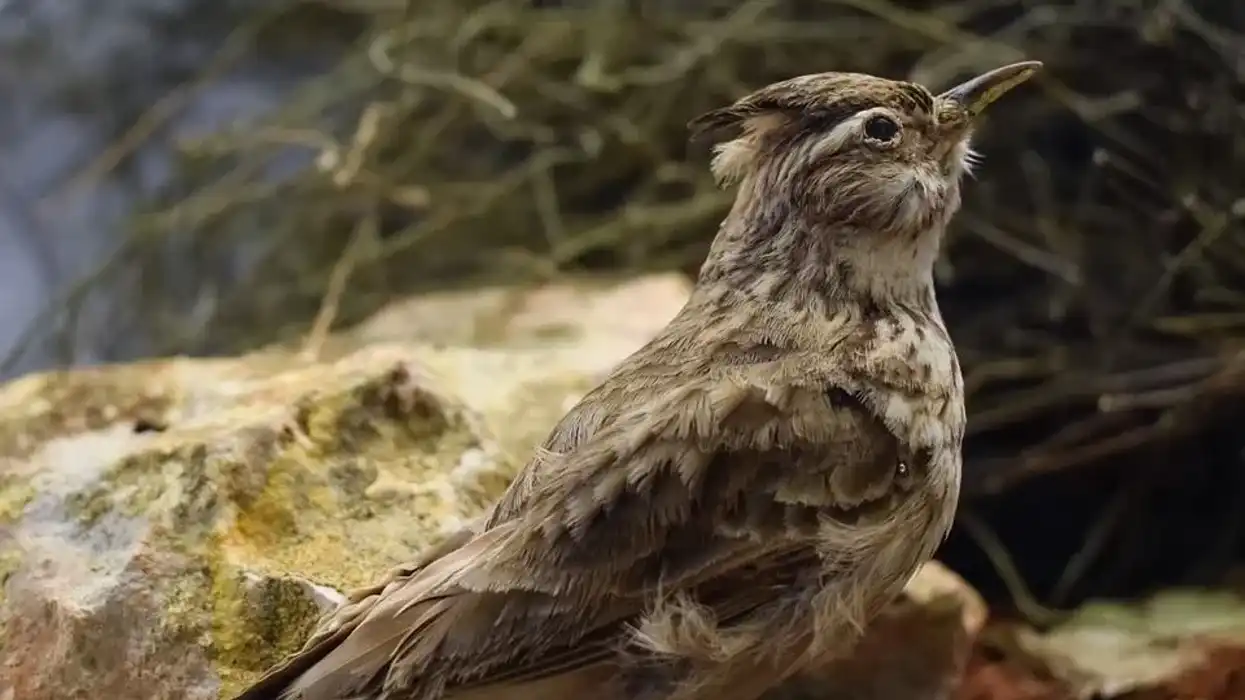The wigeon family of dabbling ducks consists of three species. The Eurasian wigeon (Mareca penelope) is one such Old-World species of the wigeon family similar to the North American wigeons, covering a wide range map.
They are also known by another synonymous binomial name: 'anas penelope'. The term 'anas' is a Latin word that means 'duck'. 'Penelope' refers to a duck that needed to be rescued from the water.
These ducks are common in the Palearctic region of Europe and Asia and visit North America as their wintering range. Europe acts as a home to around 469,000-645,000 bird pairs out of the global population.
These birds are migratory and fly southwards during the winter. Their breeding nests are built near water. Eurasian wigeon birds form monogamous pairs with their partners and they mate for life.
The birds start to flock in their breeding ground from the autumn and the breeding season lasts from April to May. These ducks become sexually mature at two years old.
To know more about this dabbling duck species of Eurasian wigeons, continue reading these facts. For similar content check out our Muscovy duck and red crossbill facts too.
Eurasian Wigeon Interesting Facts
What type of animal is the Eurasian wigeon?
The Eurasian wigeon is a type of dabbling duck.
What class of animal does the Eurasian wigeon belong to?
The Eurasian wigeon of order Anseriformes and family Anatidae belong to the class Aves, the common class for all birds.
How many Eurasian wigeons are there in the world?
The total number of adult individuals that have been calculated throughout the range map of the bird numbers is 2,800,000-3,300,000 ducks. The overall population of Eurasian wigeons is following a decreasing trend throughout their map, except in some parts where they are stable.
This bird is a regular winter visitor of North America where it is believed to increase in number.
Where does Eurasian wigeon live?
Old World Eurasian wigeons are found mostly in Europe with some of their population extending to North America. The migratory population spends their winter covering a large range map extending from Great Britain to northern Africa as well as in southeast Asia.
The bird species forms an uncommon winter visitor in the mid-Atlantic or on Pacific shores as the counterparts of American wigeons of North America.
What is a Eurasian wigeon's habitat?
The habitat of Eurasian wigeon mainly includes wetland marshes and grasslands that have tall vegetation. Shallow and slow-moving marshes or rivers with lots of submerged or floating vegetation are also perfect for these birds. In North America, their winter migration takes place in salt flats and bays or more specifically, the areas where the American wigeon species nests.
Who do Eurasian wigeons live with?
The Eurasian wigeon is a highly gregarious bird species. In their non-breeding range, these ducks form closely packed social groups.
In the winter season, many birds flock together to migrate to regions of North America. In the breeding season, their close aggregations disperse and they nest only in pairs. However, in the molting grounds after breeding, they congregate in large groups.
How long does Eurasian wigeon live?
In Britain, the oldest recorded Eurasian wigeon had a lifespan of 35 years and two months in the wild.
How do they reproduce?
More than one male bird competes to get the attention of a single female. They show off their plumage to the female by lifting their wings and exposing the white patch under their wings.
The male Eurasian wigeon also whistles in front of the female bird whilst lowering its bill to display its head crown. They form nests in crevices or depressions and line them with vegetative matter. After mating, the female ducks lay around seven to 11 eggs near water which are incubated for 40-45 days.
What is their conservation status?
The IUCN Red List has recognized Eurasian wigeons as a species of Least Concern. Although its population is decreasing, since the ducks occur throughout a wide range they can't be considered as a vulnerable species. In North America, these birds have recently started to produce colonies along with the family of North American wigeons.
Eurasian Wigeon Fun Facts
What do Eurasian wigeons look like?
Eurasian wigeons are medium-sized ducks that have a small bill, pointed tail, and narrow wings. Males have a chestnut brown head with a cream crown.
They have pinkish-brown upper breasts and their flanks, lower breasts, and belly appear gray. Females, on the other hand, have creamy heads. They can be distinguished from the species of American wigeon by their red heads.
How cute are they?
The round head and the pudgy structure of the bird make them look very cute and cuddly.
How do they communicate?
Eurasian wigeon communication occurs mainly by vocalizations. A male makes a high-pitched whistle while females call making a deeper growl.
How big is the Eurasian wigeon?
The length of Eurasian wigeons ranges between 17-20 in (42-52 cm). They are more or less similar in size to the American wigeon of North America.
How fast can Eurasian wigeon fly?
The Eurasian wigeons are said to be surface ducks who spend most of their time on or near water. They only fly during migration but their speed is unknown.
How much does Eurasian wigeon weigh?
The Eurasian wigeon's weight varies between 1.1-2.4 lb (500-1073 g).
What are the male and female names of the species?
A male Eurasian wigeon is called a cock and females of the species are known as hens.
What would you call a baby Eurasian wigeon?
The babies of these ducks are said to be a chick or hatchlings.
What do they eat?
Feeding takes place both on the water's surface by submerging their head or by grazing on land. Sometimes they also steal the food brought by other birds. They can also travel large distances to search for their food. Their diet is based entirely on plant matter.
Common foods include pondweed, duckweed, and fringed water lily similar to the American wigeons. In summer their food also includes some types of insects that feed on plant seeds. The diet of their relative birds of North America is not yet known.
Are they poisonous?
No, these members of the family of dabbling ducks do not possess any kind of poison.
Would they make a good pet?
These ducks prefer to stay in the wild than in households as pets. As a result, it is better to leave them on their terms in the wild without holding them captive.
Did you know...
Although their breeding grounds are predominantly restricted to Europe at present, it is believed some breeding populations might also be found in North America.
Is a wigeon a duck?
Based on the characteristic features shown by the bird, its morphology, and its behavior, the three species of wigeons are collectively called dabbling ducks.
What is a storm wigeon?
Storm wigeon is a very rare wigeon that is found in America. These birds are identified by the white crown on their head and their brown body.
Here at Kidadl, we have carefully created lots of interesting family-friendly animal facts for everyone to discover! For more relatable content, check out these moorhen facts and blue-winged teal facts for kids.
You can even occupy yourself at home by coloring in one of our free printable wigeon coloring pages.










